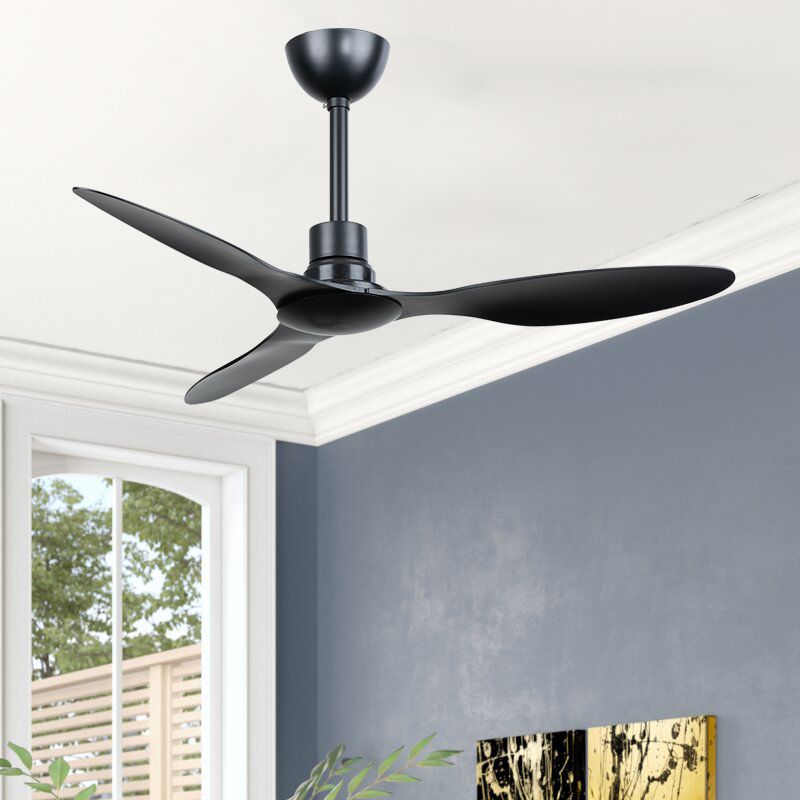There are two types of ceiling fan motors, AC motor (alternating current) and DC motor(direct current). AC fans are the traditional fan motors and still the most common, but DC technology has become much more sophisticated in recent years, and it can now be applied to both residential and industrial ceiling fans.
As a professional fan manufactures, we will try to point out the advantages of DC fans, give you one more option when you buy a fan.
1. Consumes less power
DC fans are widely regarded as the most efficient type of fans. They consume significantly less power than AC fans. In fact, DC fans consume up to 70 percent less energy to produce the same output as traditional AC fan types. This means, that a 25-watt DC-driven yields the same results as 100-watt AC fan. This is ideal for commercial settings, like restaurants, allowing you to keep fans running all day without incurring astronomical electric bills. ( 1 Hour time AC Pedestal Fan = 15 Hour time DC Pedestal Fan)
2. Minimal electromagnetic interference
Due to low power used as well as the application of sophisticated electronic switching, the electromagnetic interference of DC fans is minimal. Sensitive electronic devices often use DC fans to prevent electromagnetic interference. For example, computer applications and equipment rely on DC fans, to prevent overheating while still minimizing electromagnetic interference that could negatively affect sensitive applications.
3. Acoustically Quieter
DC fans make use of a new type (sin180) of electronically commutated motor (ECM). Not only are these motors ultra-efficient, they are also incredibly quiet. Because they are so quiet, DC fans are an excellent option for applications such as medical instruments, telecom switches, or car entertainment systems, where noise could be a nuisance.
4. Lower voltage
DC fans generally use less voltage than AC fans. The majority of DC fans are low-voltage fans. For example, you can typically find 5V, 12V, and 24V versions of DC fans. Larger models of DC fans, such as 119mm to 172mm fan models, are typically available in 48V. In comparison, most AC cooling fan models are available in 115V, a much higher voltage. Lower voltage also makes DC fans potentially less dangerous.
5. Variable flow
With minimal additional cost, the DC fan can offer a variety of speed control functions, so that the fan can meet the airflow target of a given application. The fan can be controlled by Voltage, Current, Temperature, Resistance and PWM signals. By controlling the fan speed according to what is needed, the life of the fan can be increased and its acoustical airflow noise can be kept to the minimum necessary.
In extensive load shedding in developing countries, it is not suitable to operate this fan at UPS because it is more powerful and such all the current in the batteries and UPS cannot fully recharged in less time. So DC fans are much more suitable.
Post time: Dec-06-2019
